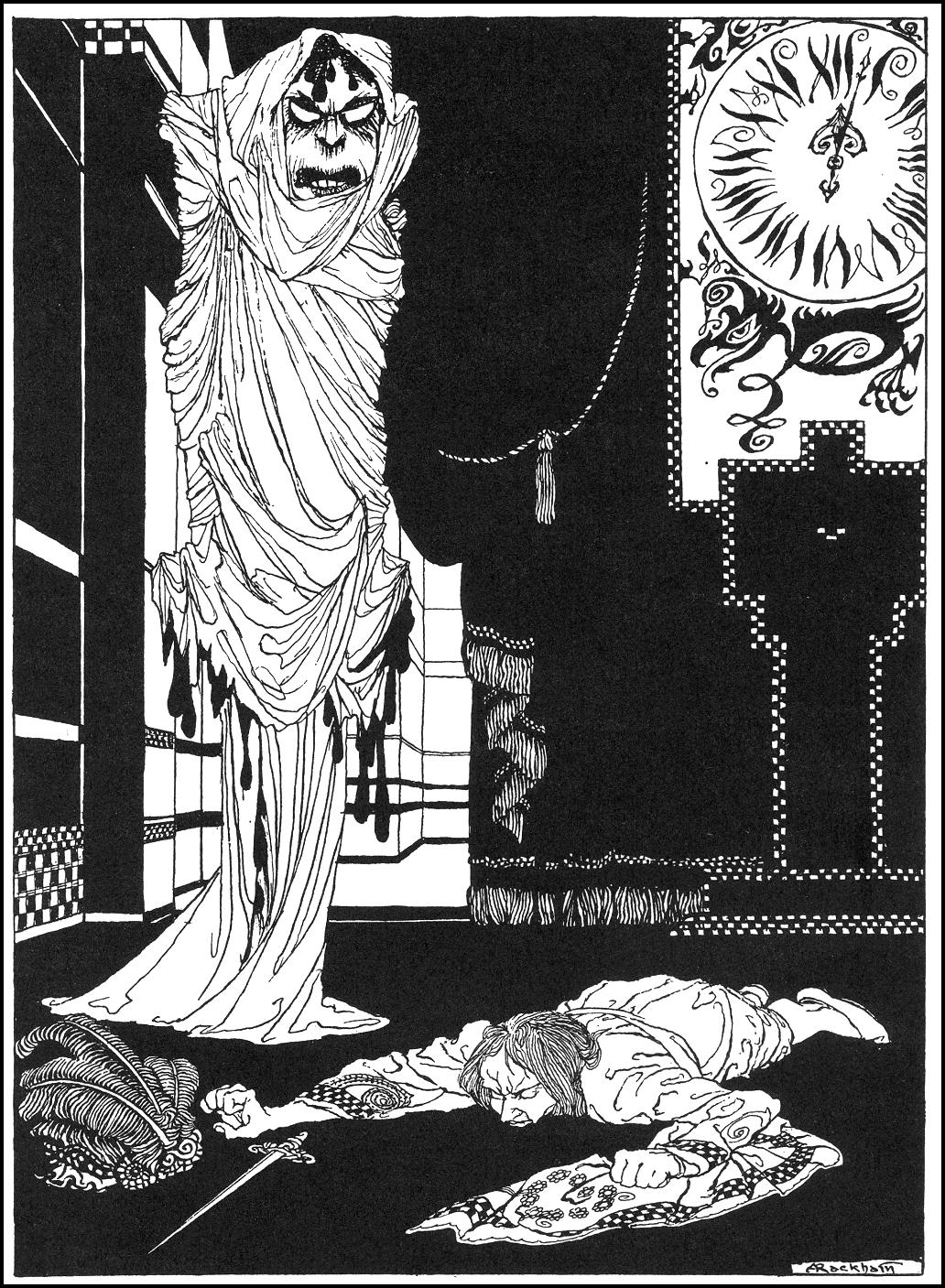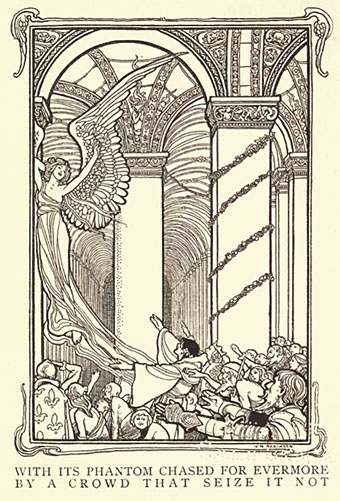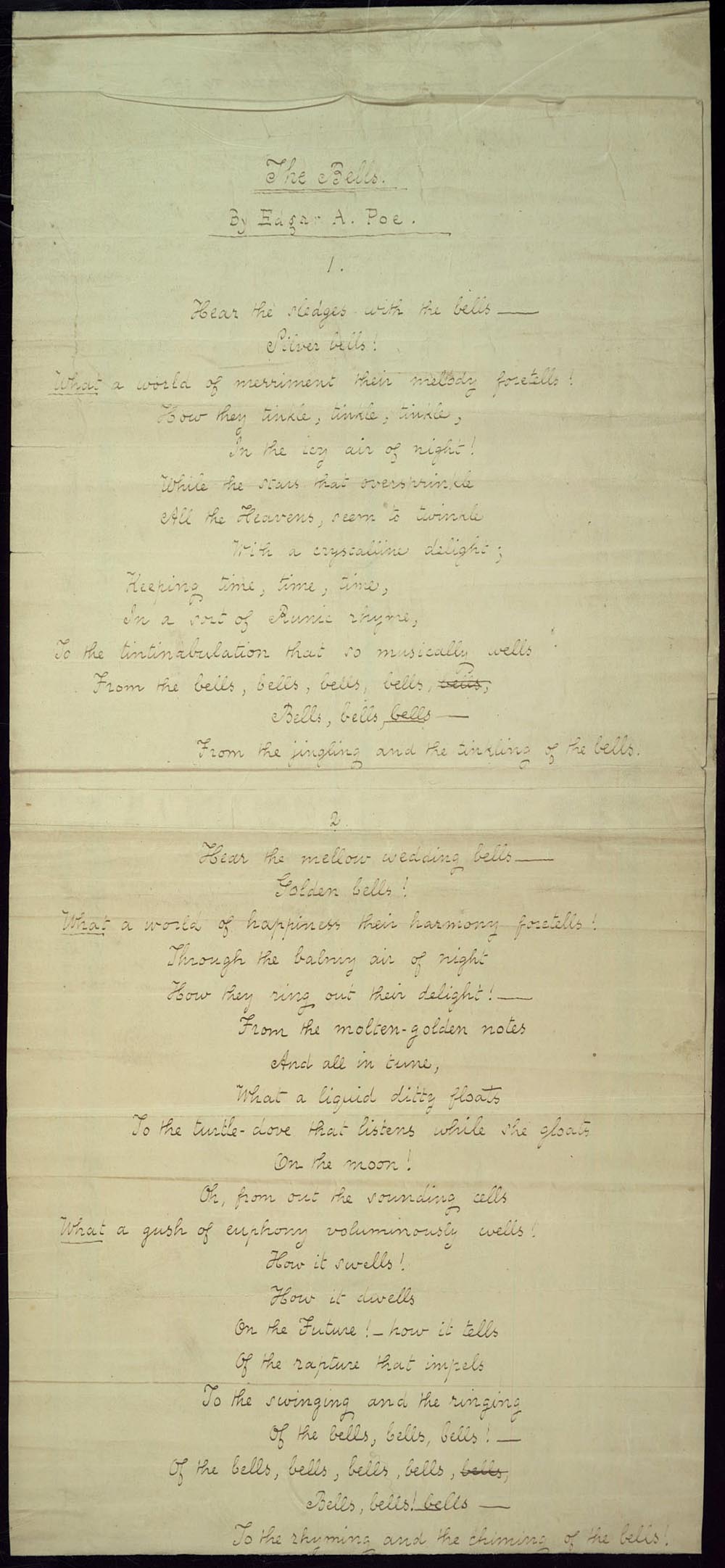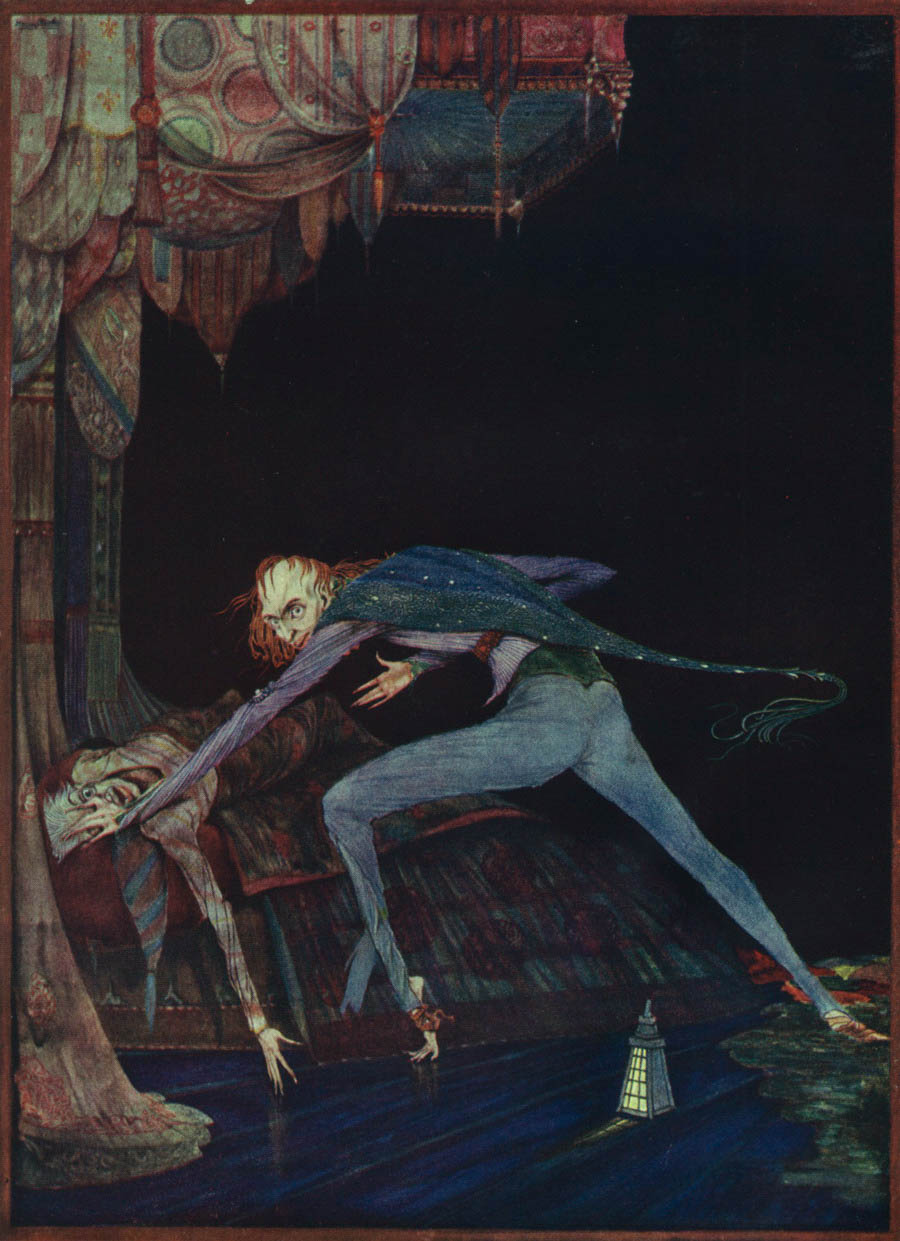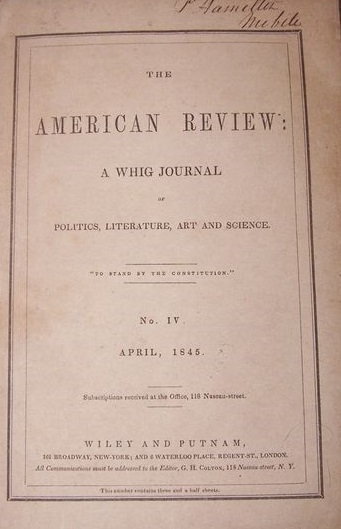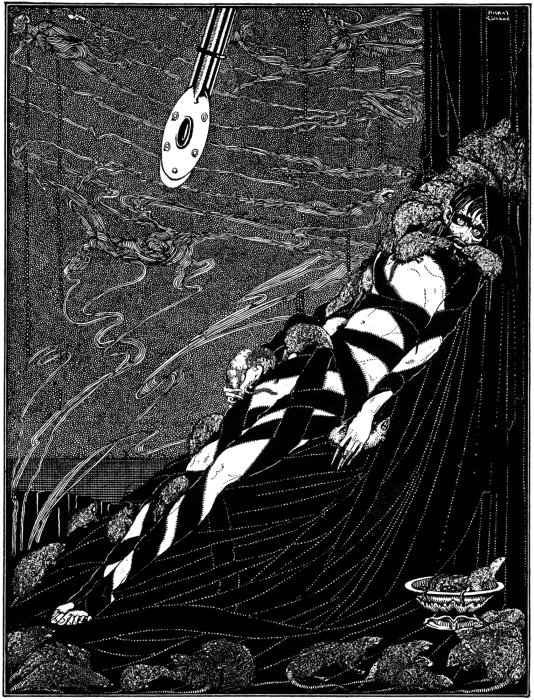|
A Midnight Visit
''A Midnight Visit'' is an Australian multi-sensory immersive theatre experience based upon the works of Edgar Allan Poe. The audience walks at their own pace through a variety of theatrically designed rooms featuring adult concepts, uneven floors, small and large spaces, and low-level lighting. Finding themselves as co-creators of their own experience, audiences are transported into a macabre dream world, and negotiate encounters with peculiar characters who sing, act, dance and even perform circus aerials. Production Created in 2018 by Kirsten Siddle and Danielle Harvey of theatre company Broad Encounters, the production has toured sold-out shows in Sydney, Melbourne, Perth, and Brisbane. Sydney (03 Oct 2018 - 09 Dec 2018) * Perth "House of Usher GIrls School" (24 Jan 2019 - 04 Mar 2019) * Melbourne (30 Jul 2019 - 18 Nov 2019) * Brisbane (30 Jul 2021 - 30 Jan 2022) In November 2021 it became Brisbane's longest running theatre production breaking the record held by The Phant ... [...More Info...] [...Related Items...] OR: [Wikipedia] [Google] [Baidu] |
Immersive Theater
Immersive theater differentiates itself from traditional theater by removing the stage and immersing audiences within the performance itself. Often, this is accomplished by using a specific location ('' site-specific''), allowing audiences to converse with the actors and interact with their surroundings ('' interactive''), thereby breaking the fourth wall. (Immersive theater and interactive theater are not necessarily synonymous; immersive theater may not have interactive elements in it at all, and interactive theater may not be immersive in the core sense.) In ''choose-your-own-adventure theater'', agency is given to the audience to participate in changing the narrative while the performance is taking place. ''Bespoke theater'', invented by ''Fondudes'', extends participation to pre-production so each show is customized per audience at script level. Modern forms of immersive theater have a wide range of definitions, all based upon the degree and type of engagement found between ac ... [...More Info...] [...Related Items...] OR: [Wikipedia] [Google] [Baidu] |
The Masque Of The Red Death
"The Masque of the Red Death" (originally published as "The Mask of the Red Death: A Fantasy") is a short story by American writer Edgar Allan Poe, first published in 1842. The story follows Prince Prospero's attempts to avoid a dangerous plague, known as the Red Death, by hiding in his abbey. He, along with many other wealthy nobles, hosts a masquerade ball in seven rooms of the abbey, each decorated with a different color. In the midst of their revelry, a mysterious figure disguised as a Red Death victim enters and makes his way through each of the rooms. Prospero dies after confronting this stranger, whose "costume" proves to contain nothing tangible inside it; the guests also die in turn. Poe's story follows many traditions of Gothic fiction and is often analyzed as an allegory about the inevitability of death, though some critics advise against an allegorical reading. Many different interpretations have been presented, as well as attempts to identify the true nature of the e ... [...More Info...] [...Related Items...] OR: [Wikipedia] [Google] [Baidu] |
The Conqueror Worm
"The Conqueror Worm" is a poem by Edgar Allan Poe about human mortality and the inevitability of death. It was first published separately in ''Graham's Magazine'' in 1843, but quickly became associated with Poe's short story "Ligeia" after Poe added the poem to a revised publication of the story in 1845. In the revised story, the poem is composed by the eponymous Ligeia, and taught to the narrator in the fits of her death throes. Synopsis An audience of weeping angels watches a play performed by "mimes, in the form of God on high", and controlled by vast formless shapes looming behind the scenes. The mimes chase a "Phantom" which they can never capture, running around in circles. Finally, a monstrous "crawling shape" emerges, and eats the mimes. The final curtain comes down, "a funeral pall", signaling an end to the "tragedy, 'Man'", whose only hero is "The Conqueror Worm". Publication history "The Conqueror Worm" was first published as a stand-alone poem in the January 1843 iss ... [...More Info...] [...Related Items...] OR: [Wikipedia] [Google] [Baidu] |
The City In The Sea
:The City in the Sea ''is also the title of a science fiction novel by Wilson Tucker'' "The City in the Sea" is a poem by Edgar Allan Poe. The final version was published in 1845, but an earlier version was published as "The Doomed City" in 1831 and, later, as "The City of Sin". The poem tells the story of a city ruled by a personification of Death using common elements from Gothic fiction. The poem appeared in the ''Southern Literary Messenger'', '' The American Review'', the ''Broadway Journal'', as well as in the 1850 collection '' The Poets and Poetry of America''. Poe drew his inspiration from several works, including ''Kubla Khan'' by Samuel Taylor Coleridge. Analysis The city is one in the west ruled by Death who is revered above all: "While from a proud tower in the town, Death looks gigantically down." This is another classic Poe poem in that it deals with death and presents it in a non-conventional way. It is seen as a god that rules over a glorious, peaceful city in t ... [...More Info...] [...Related Items...] OR: [Wikipedia] [Google] [Baidu] |
The Bells (poem)
"The Bells" is a heavily onomatopoeic poem by Edgar Allan Poe which was not published until after his death in 1849. It is perhaps best known for the diacopic use of the word "bells." The poem has four parts to it; each part becomes darker and darker as the poem progresses from "the jingling and the tinkling" of the bells in part 1 to the "moaning and the groaning" of the bells in part 4. Analysis This poem can be interpreted in many different ways, the most basic of which is simply a reflection of the sounds that bells can make, and the emotions evoked from that sound. For example, "From the bells bells bells bells/Bells bells bells!" brings to mind the clamoring of myriad church bells. Several deeper interpretations exist as well. One is that the poem is a representation of life from the nimbleness of youth to the pain of age. Growing despair is emphasized alongside the growing frenzy in the tone of the poem. The sounds of the verses, specifically the repetitive "''bells, be ... [...More Info...] [...Related Items...] OR: [Wikipedia] [Google] [Baidu] |
Annabel Lee
"Annabel Lee" is the last complete poem composed by American author Edgar Allan Poe. Like many of Poe's poems, it explores the theme of the death of a beautiful woman.Meyers, Jeffrey. ''Edgar Allan Poe: His Life and Legacy''. New York: Cooper Square Press, 1992. p. 243. The narrator, who fell in love with Annabel Lee when they were young, has a love for her so strong that even angels are envious. He retains his love for her even after her death. There has been debate over who, if anyone, was the inspiration for "Annabel Lee". Though many women have been suggested, Poe's wife Virginia Eliza Clemm Poe is one of the more credible candidates. Written in 1849, it was not published until shortly after Poe's death that same year. Synopsis The poem's narrator describes his love for Annabel Lee, which began many years ago in a "kingdom by the sea". Though they were young, their love for one another burned with such intensity that even angels were envious. For this reason the narrator beli ... [...More Info...] [...Related Items...] OR: [Wikipedia] [Google] [Baidu] |
A Dream Within A Dream
"A Dream Within a Dream" is a poem written by American poet Edgar Allan Poe, first published in 1849. The poem has 24 lines, divided into two stanzas. Analysis The poem dramatizes the confusion felt by the narrator as he watches the important things in life slip away.Silverman, Kenneth. ''Edgar A. Poe: Mournful and Never-ending Remembrance''. New York: Harper Perennial, 1991. p. 402 Realizing he cannot hold on to even one grain of sand, he is led to his final question whether all things are just a dream.Sova, Dawn B. ''Edgar Allan Poe: A to Z''. New York: Checkmark Books, 2001: 73. It has been suggested that the "golden sand" referenced in the 15th line signifies that which is to be found in an hourglass, consequently time itself.Poe, E. A. (1969). Poems Collected in 1829. In T. O. Mabbott (Ed.), ''Collected Works of Edgar Allan Poe, Volume I: Poems'' (pp. 130). Massachusetts: Belknap Press. Another interpretation holds that the expression evokes an image derived from the 1848 ... [...More Info...] [...Related Items...] OR: [Wikipedia] [Google] [Baidu] |
The Tell-Tale Heart
"The Tell-Tale Heart" is a short story by American writer Edgar Allan Poe, first published in 1843. It is related by an unnamed narrator who endeavors to convince the reader of the narrator's sanity while simultaneously describing a murder the narrator committed. The victim was an old man with a filmy pale blue "vulture-eye", as the narrator calls it. The narrator emphasizes the careful calculation of the murder, attempting the perfect crime, complete with dismembering the body in the bathtub and hiding it under the floorboards. Ultimately, the narrator's actions result in hearing a thumping sound, which the narrator interprets as the dead man's beating heart. The story was first published in James Russell Lowell's ''The Pioneer'' in January 1843. "The Tell-Tale Heart" is often considered a classic of the Gothic fiction genre and is one of Poe's best known short stories. The specific motivation for murder (aside from the narrator's hatred of the old man's eye), the relationship ... [...More Info...] [...Related Items...] OR: [Wikipedia] [Google] [Baidu] |
Some Words With A Mummy
"Some Words with a Mummy" is a satirical short story by American writer Edgar Allan Poe. It was first published in '' The American Review: A Whig Journal of Politics, Literature, Art and Science'' in April 1845. It is recognized as an important early portrayal of a revived Egyptian mummy. Plot The narrator eats a very large amount of Welsh rabbit, accompanied by "brown stout", and then goes to bed for a night's sleep. However, he is soon awakened and taken to Doctor Ponnonner's home to witness the unwrapping of a mummy. They cut into the first sarcophagus, remove it and discover the mummy's name, Allamistakeo. The second and third sarcophagi are removed to reveal the body, placed in a papyrus sheath, covered in plaster and decorated with painting and gold gilt. After removing this, they examine the body. They find it to be in exceptionally good condition, although it does not seem to have been embalmed in the normal way as the skin is red and there are no incisions. The doctor lay ... [...More Info...] [...Related Items...] OR: [Wikipedia] [Google] [Baidu] |
A Predicament
"A Predicament" is a humorous short story by Edgar Allan Poe, usually combined with its companion piece "How to Write a Blackwood Article". It was originally titled "The Scythe of Time". The paired stories parody the Gothic sensation tale, popular in England and America since the early 19th century. Plot summary The bizarre story follows a female narrator, Signora Psyche Zenobia. While walking through "the goodly city of Edina" with her poodle and her black servant, Pompey, she is drawn to a large Gothic cathedral. At the steeple, Zenobia sees a small opening she wishes to look through. Standing on Pompey's shoulders, she pushes her head through the opening, realizing she is in the face of a giant clock. As she gazes out at the city beyond, she soon finds that the sharp minute hand has begun to dig into her neck. Slowly, the minute hand decapitates her. At one point, pressure against her neck causes her eye to fall and roll down into the gutter and then to the street below ... [...More Info...] [...Related Items...] OR: [Wikipedia] [Google] [Baidu] |
The Pit And The Pendulum
"The Pit and the Pendulum" is a short story by American writer Edgar Allan Poe and first published in 1842 in the literary annual ''The Gift: A Christmas and New Year's Present for 1843''. The story is about the torments endured by a prisoner of the Spanish Inquisition, though Poe skews historical facts. The narrator of the story describes his experience of being tortured. The story is especially effective at inspiring fear in the reader because of its heavy focus on the senses, such as sound, emphasizing its reality, unlike many of Poe's stories which are aided by the supernatural. The traditional elements established in popular horror tales at the time are followed, but critical reception has been mixed. The tale has been adapted to film several times. Plot summary The unnamed narrator is brought to trial before sinister judges of the Spanish Inquisition, charged with offenses that are never stated. As seven tall white candles on a table slowly burn down, the narrator feels hi ... [...More Info...] [...Related Items...] OR: [Wikipedia] [Google] [Baidu] |
The Oval Portrait
"The Oval Portrait" is a horror short story by American writer Edgar Allan Poe, involving the disturbing circumstances of a portrait in a château. It is one of his shortest stories, filling only two pages in its initial publication in 1842. Plot summary The tale begins with an injured narrator (the story offers no further explanation of his impairment) seeking refuge in an abandoned mansion in the Apennines. The narrator spends his time admiring the paintings that decorate the strangely shaped room and perusing a volume, found upon a pillow, that describes them. Upon moving the candle closer to the book, the narrator immediately discovers a before-unnoticed painting depicting the head and shoulders of a young girl. The picture inexplicably enthralls the narrator "for an hour perhaps". After steady reflection, he realizes that the painting's "absolute life-likeliness" of expression is the captivating feature. The narrator eagerly consults the book for an explanation of the pictur ... [...More Info...] [...Related Items...] OR: [Wikipedia] [Google] [Baidu] |

